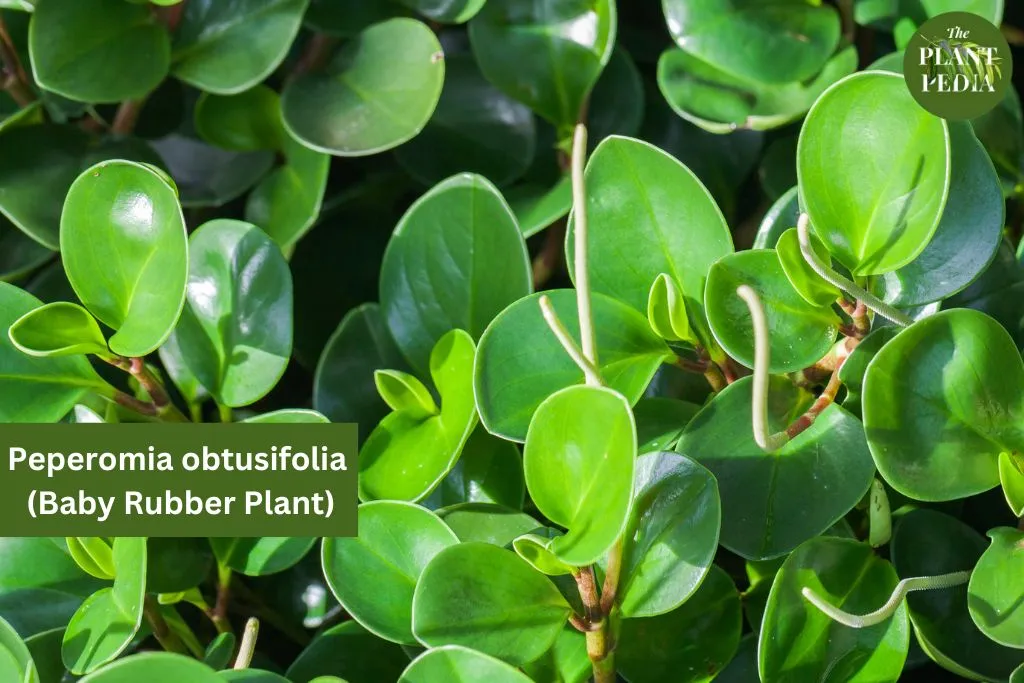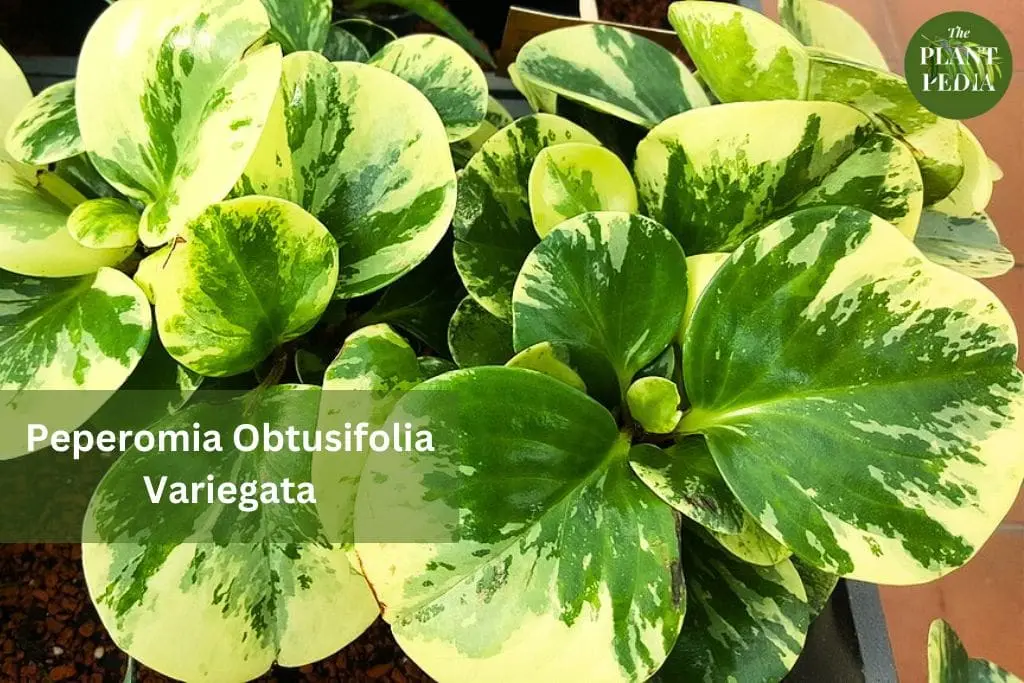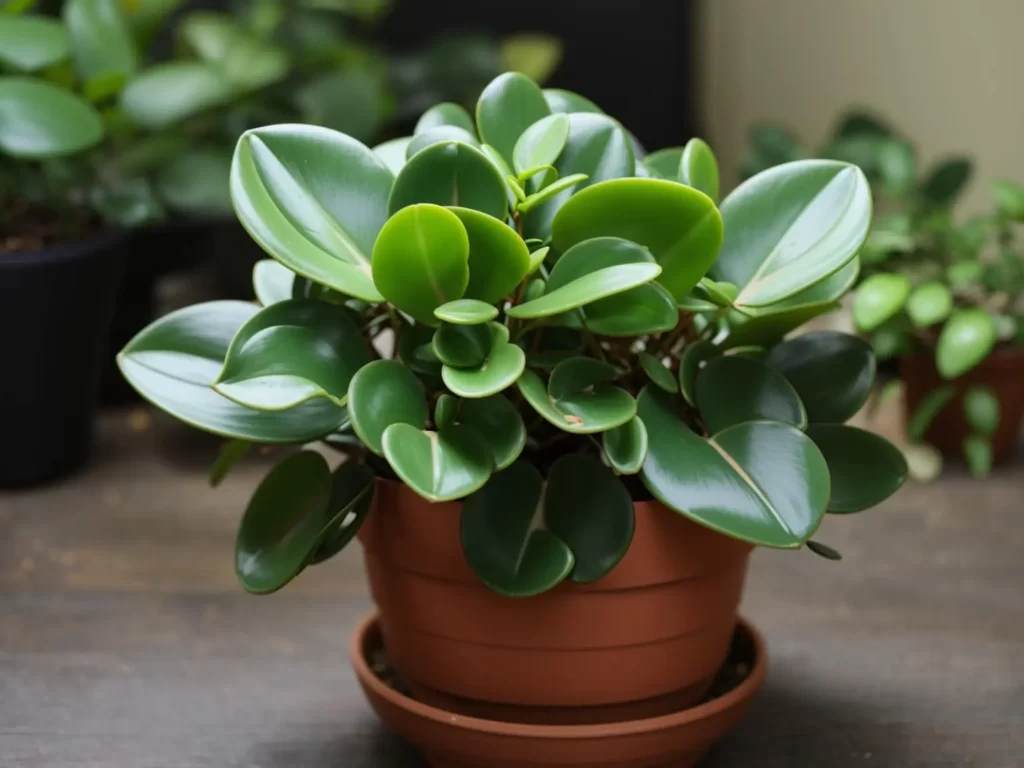The baby rubber plant, scientifically known as Peperomia obtusifolia, is a popular houseplant cherished for its easy maintenance and attractive foliage.
Like any plant, it benefits from occasional pruning to encourage healthy growth, maintain its shape, and enhance its overall appearance.
In this detailed guide, we will delve into the art of pruning your baby rubber plant, covering everything from the benefits of pruning to step-by-step instructions and tips for success.

Why Prune Your Baby Rubber Plant?
Pruning is a crucial aspect of plant care that helps promote robust growth and maintain an aesthetically pleasing appearance.
Here are some key reasons why pruning your baby rubber plant is essential:
1. Stimulates New Growth
Pruning is akin to a rejuvenating spa day for your plant. By strategically removing older or overgrown stems and leaves, you’re sending a signal to the plant that it’s time to invest energy in producing fresh, vibrant growth.
This results in a lusher, more densely foliated plant that will thrive in its environment.
2. Controls Size and Shape
Imagine your baby rubber plant as a piece of living art. Without periodic pruning, it may grow unevenly or encroach on surrounding spaces.
By carefully trimming back wayward growth, you can maintain a harmonious balance, ensuring it complements your living space perfectly.
3. Removes Diseased or Damaged Parts
Just like any living organism, plants can experience periods of stress or illness. Pruning is your first line of defense against these issues.
By promptly removing any afflicted leaves, stems, or branches, you’re preventing the problem from spreading further, giving your plant the best chance to recover and flourish.
4. Enhances Air Circulation
Consider the interior of your baby rubber plant as a bustling city. Too much congestion can lead to stagnation, making it difficult for air to circulate freely.
Pruning helps open up the plant, allowing air to flow more efficiently. This reduces the risk of fungal growth, ensuring your plant breathes easy and thrives in a healthier environment.
5. Improves Aesthetic Appeal
A well-maintained baby rubber plant is a sight to behold. Pruning isn’t just about the plant’s health; it’s also about creating a visual masterpiece in your living space.
Regular pruning allows you to sculpt and refine your plant, showcasing its natural beauty and making it a standout feature in your home.
When to Prune Your Baby Rubber Plant
Timing is crucial when it comes to pruning any plant, and the baby rubber plant is no exception. Here are some guidelines to help you determine the best time to prune:
1. Spring and Summer
The optimal time for pruning your baby rubber plant is during its active growing season, which typically spans from late spring to early summer.
This is when the plant is most actively producing new growth. The increased sunlight and longer days provide the ideal conditions for your plant to recover and thrive after pruning.
During this period, your baby rubber plant is in its growth phase, making it more resilient to the stress of pruning.
The abundant energy it receives from ample sunlight and warmth helps it recover quickly, ensuring that new shoots and leaves emerge vigorously.
2. Avoid Winter
It’s generally advisable to avoid heavy pruning during the winter months. As the days grow shorter and temperatures drop, your baby rubber plant enters a period of dormancy or slowed growth.
During this time, it’s more susceptible to stress, and excessive pruning can hinder its ability to recover.
However, this doesn’t mean you should completely ignore your plant during winter. You can still perform minor maintenance tasks such as removing dead or damaged leaves.
Just be cautious not to undertake any significant pruning efforts until the active growing season resumes in spring.
Tools Needed for Pruning
1. Sharp, Clean Pruning Shears
Pruning shears, also known as secateurs, are the workhorse of any plant enthusiast’s toolkit. It’s imperative that these shears are not only sharp but also clean.
Sharp blades make clean cuts, which are essential for the health of your plant. Dull blades can cause unnecessary damage and stress to the plant.
Additionally, clean shears help prevent the spread of diseases between plants. Make sure to sharpen and clean them before and after each use.
2. Rubbing Alcohol or Disinfectant
This might seem like an unusual addition to a pruning toolkit, but it’s an important one. Before and after each use, you should sterilize your pruning shears.
This step is crucial for preventing the transmission of diseases or pathogens between plants. Simply dip a clean cloth or cotton ball in rubbing alcohol or disinfectant and wipe down the blades of your pruning shears.
3. Gloves
While not an absolute necessity, wearing gloves can protect your hands from potential irritants on the plant. Some plants have sap or other substances that can cause skin irritation.
Additionally, gloves provide an extra layer of protection if you’re working with thorny or sharp-edged plants.
4. Optional: Long-Handled Pruners or Loppers
For larger or thicker branches, consider using long-handled pruners or loppers. These tools provide additional leverage, allowing you to tackle tougher cuts with ease.
They are especially useful for more mature baby rubber plants with thicker stems.
5. Optional: Pruning Saw
In rare cases where you have exceptionally thick branches that can’t be managed with pruning shears or loppers, a pruning saw may be necessary.
This tool is designed for cutting through larger branches with precision.
By having these tools readily available, you’ll be well-equipped to tackle any pruning task that your baby rubber plant requires.
Remember to always use your tools with care and consideration for the plant, making clean, precise cuts for optimal results.

Read: Peperomia Obtusifolia Variegata.
Step-by-Step Guide to Pruning Your Baby Rubber Plant
Now that you understand the importance of pruning and have the necessary tools, let’s dive into the step-by-step process:
Step 1: Assess the Plant
Begin by closely examining your baby rubber plant. Look for any dead, diseased, or damaged leaves, stems, or branches. These are the parts that will need to be pruned.
It’s important to take your time during this step to ensure you identify all areas that require attention.
Step 2: Prepare Your Tools
Before you begin pruning, make sure your tools are clean and sharp. Sterilize your pruning shears using rubbing alcohol or a disinfectant to prevent the spread of diseases.
This step is crucial to maintain the health of your plant.
Step 3: Remove Dead or Diseased Parts
Start by gently removing any dead or diseased leaves, stems, or branches. Make clean cuts as close to the base of the plant as possible.
This promotes healthy new growth and prevents the spread of any diseases.
Step 4: Trim Overgrown Branches
If your baby rubber plant has grown leggy or uneven, selectively trim back the longer stems.
Look for branches that have grown significantly longer than the rest and trim them back to promote a more balanced and compact growth.
Step 5: Control Size and Shape
To maintain the desired size and shape of your plant, prune back any branches that are extending too far or creating an unbalanced appearance.
Take care to make cuts that maintain the natural form of the plant.
Step 6: Pinch Off Growth Tips
For a bushier, more compact plant, consider pinching off the tips of certain stems. This encourages lateral growth and results in a fuller, more lush appearance.
Use your thumb and forefinger to pinch off the top inch or so of a stem.
Step 7: Monitor Growth
After pruning, keep a close eye on your baby rubber plant’s progress. As new growth emerges, continue to remove any new dead or diseased growth as needed.
This ongoing care will help maintain the health and appearance of your plant.
My Tips for Successful Pruning
1. Start Small:
- If you’re new to pruning, begin with light, minor trimming. This allows you to get a feel for the process without risking over-pruning.
2. Take Your Time:
- Rushing through the process can lead to mistakes. Carefully assess each part of the plant before making any cuts. Precision is key.
3. Regular Maintenance:
- Perform minor maintenance tasks, such as removing dead or damaged leaves, on a regular basis. This reduces the need for more extensive pruning later on.
4. Observe Growth Patterns:
- Pay attention to how your baby rubber plant naturally grows. Understanding its tendencies will help you make more informed pruning decisions.
5. Consider the 30% Rule:
- As a general guideline, avoid removing more than 30% of the plant’s foliage at any given time. This helps prevent excessive stress.
6. Use Clean, Sharp Tools:
- Always ensure your pruning shears are clean and sharp. Clean cuts minimize damage and promote faster healing.
7. Sterilize Tools:
- Sterilize your pruning shears before and after each use. This prevents the spread of diseases from one part of the plant to another.
8. Focus on Problem Areas:
- Concentrate on areas that need attention, such as overgrown branches or diseased leaves. This allows for targeted pruning and helps maintain the plant’s overall health.
9. Don’t Fear Experimentation:
- Plants are resilient. If you make a minor mistake, they often have the capacity to recover with proper care.
10. Observe Recovery:
- After pruning, monitor your plant’s recovery. Look for signs of new growth and ensure there are no adverse effects from the pruning process.
11. Adjust for Seasonal Changes:
- Recognize that the needs of your baby rubber plant may vary seasonally. Adjust your pruning practices accordingly, avoiding heavy pruning during periods of dormancy.
12. Consult Reliable Sources:
- If you’re unsure about a specific pruning technique, consult trusted gardening resources or seek advice from experienced gardeners.
By incorporating these tips into your pruning routine, you’ll be well-equipped to nurture a healthy, thriving baby rubber plant that’s not only visually appealing but also robust and vibrant. Happy pruning!

Related FAQs:
Can I use regular household scissors for pruning my baby rubber plant?
While regular household scissors can be used in a pinch, it’s highly recommended to use specialized pruning shears or secateurs.
These tools are designed to make clean cuts without causing unnecessary damage to the plant. Using dull or inappropriate tools may result in jagged cuts that can harm the plant.
Is there a specific time of day that’s best for pruning my baby rubber plant?
Ideally, it’s best to prune your baby rubber plant in the morning when the plant is well-hydrated and the temperatures are cooler.
This allows the plant to recover more quickly from the pruning process.
Can I propagate cuttings from the pruned parts of my baby rubber plant?
Yes, baby rubber plants are relatively easy to propagate from cuttings. After pruning, allow the cuttings to callus over for a day or two, then plant them in a well-draining potting mix.
Keep them in a warm, humid environment with indirect light until they establish roots.
My baby rubber plant is getting too tall and leggy. How can I address this?
To combat legginess, selectively prune back the longer stems to encourage a more compact and balanced growth pattern.
Additionally, consider rotating the plant periodically to ensure all sides receive adequate light, which can help prevent excessive stretching.
My baby rubber plant has a lot of yellowing leaves. Should I prune them off?
Yes, it’s a good idea to remove yellowing or diseased leaves. This not only improves the plant’s appearance but also helps prevent the spread of any potential issues.
Use clean pruning shears to make precise cuts near the base of the affected leaves.
Can I prune my baby rubber plant if it’s currently flowering?
It’s generally best to avoid heavy pruning while the plant is in bloom. Instead, focus on removing any dead or damaged growth.
Once the flowering period is over, you can proceed with more extensive pruning if needed.
I accidentally pruned too much from my baby rubber plant. Will it recover?
Baby rubber plants are resilient and can often recover from over-pruning with proper care.
Ensure the plant is placed in appropriate lighting conditions, water it consistently, and consider applying a balanced fertilizer to support its recovery.
Can I prune my baby rubber plant if it’s stressed or not growing well?
It’s generally advisable to avoid extensive pruning if your plant is already stressed or not thriving.
Focus on providing optimal growing conditions, including appropriate light, watering, and humidity levels, before considering any significant pruning.
Conclusion
Pruning your baby rubber plant is a valuable skill that will contribute to its overall health, growth, and appearance.
By following this comprehensive guide, you can confidently embark on the journey of nurturing a thriving and visually stunning baby rubber plant in your home.
Remember, practice makes perfect, so don’t hesitate to refine your pruning techniques over time. Happy pruning!
